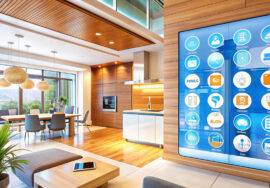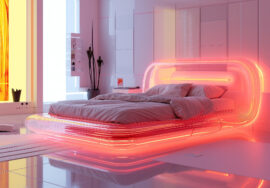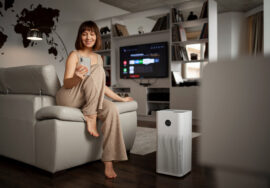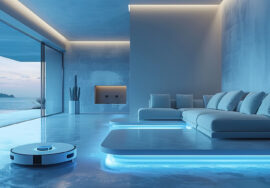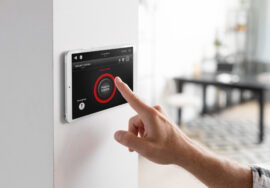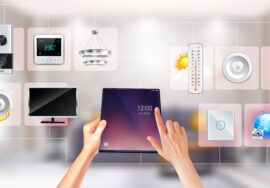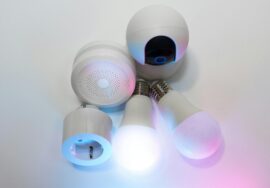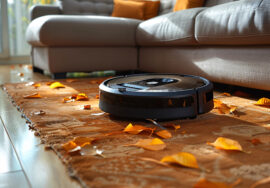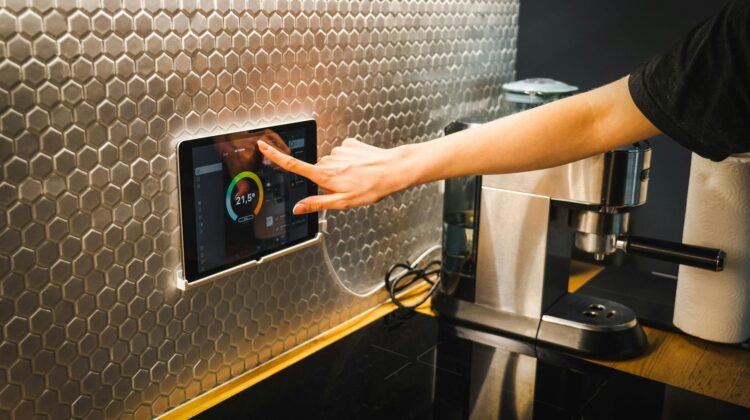
Invisible Tech Trends: Seamless Smart Home Devices That Blend into Your Decor
Introduction: When Smart Home Meets Style
In the early days of smart technology, devices often stood out—bulky speakers, robotic-looking thermostats, and glaring LED lights. Today, the industry is shifting toward invisible tech trends, where Smart Home devices integrate effortlessly into décor. Instead of clashing with interiors, modern smart devices are becoming part of the design, offering functionality without compromising style. This blend of technology and aesthetics is transforming homes into seamless environments where innovation feels natural.
The Rise of Invisible Smart Home Design
As more homeowners invest in smart living, they no longer want technology to dominate their spaces. The demand is for sleek, minimalistic devices that remain discreet yet powerful. From thermostats that look like wall art to speakers hidden in light fixtures, invisible smart technology is redefining the balance between convenience and beauty.
The trend is not just about hiding devices—it’s about integrating them into everyday objects, making technology a natural extension of home design.
Smart Speakers Disguised as Décor
One of the most common Smart Home devices, the speaker, is also the one most likely to interfere with aesthetic flow. Today’s invisible tech takes a different approach:
- Picture Frame Speakers: Companies like IKEA and Sonos offer speakers designed as wall art, blending sound with visual appeal.
- Furniture-Integrated Speakers: Some modern sofas and tables now include embedded speakers, ensuring surround sound without clutter.
- Minimalist Cylinders: Sleek, fabric-wrapped designs make voice assistants feel like part of the décor rather than tech intrusions.
These innovations let homeowners enjoy immersive audio without sacrificing their interior design style.
Lighting That Disappears Into Design
Lighting has always been central to ambiance, and smart lighting now offers design-first solutions. Invisible lighting trends include:
- Recessed LED Strips: Hidden behind ceilings, furniture, or under shelves, providing glow without visible fixtures.
- Smart Bulbs in Classic Fixtures: Smart bulbs that fit traditional chandeliers or lamps maintain the look while adding intelligence.
- Panel and Frame Lighting: Wall-mounted lights that double as decorative panels bring both function and art to a space.
The result is an environment where technology enhances mood but remains unseen.
Thermostats and Controls as Art Pieces
Smart thermostats no longer need to be obvious wall gadgets. Designers are focusing on making controls discreet, stylish, or entirely hidden.
- Minimal Touch Panels: Mounted flat against walls, blending in with paint or wallpaper.
- Art-Inspired Thermostats: Devices with customizable covers that resemble art prints.
- App-First Control: Some systems remove wall devices altogether, relying purely on smartphone apps and voice commands.
This subtle approach means functionality without the industrial feel of traditional tech.
Smart TVs That Vanish When Off
Televisions are often the focal point of living rooms, but many homeowners prefer them to disappear when not in use. Invisible Smart Home trends in entertainment include:
- Frame TVs: Devices that transform into digital art when powered down, displaying paintings or photos.
- Rollable OLED Screens: TVs that retract into consoles when not in use.
- Projector Systems: Compact smart projectors hidden in ceilings or furniture replace bulky television screens.
This makes entertainment immersive when needed and invisible when not.
Hidden Security and Safety Devices
Home security is essential, but many don’t want cameras and sensors interrupting décor. Invisible tech solves this with discreet innovations:
- Cameras in Doorbells or Light Fixtures: Offering security without bulky wall mounts.
- Motion Sensors Embedded in Trim: Installed into baseboards or ceilings, blending seamlessly.
- Smoke Detectors as Ceiling Designs: Modern detectors resemble decorative ceiling features while maintaining safety.
These subtle systems keep homes protected without compromising style.
Kitchens and Bathrooms: Functional Yet Hidden Tech
Even functional spaces are seeing a design-driven transformation.
- Smart Faucets and Showers: Equipped with hidden sensors for touchless use and precise water temperature control.
- Built-In Smart Appliances: Refrigerators, ovens, and dishwashers with flat, handle-free panels that blend into cabinetry.
- Voice-Controlled Mirrors: Bathroom mirrors that double as displays for weather updates, news, or personal health tracking.
These upgrades ensure kitchens and bathrooms remain elegant while being ultra-functional.
The Role of AI in Invisible Smart Homes
AI is essential in making invisible smart devices feel proactive rather than reactive. With ambient sensors and context-aware systems, AI removes the need for bulky switches or visible controls. Instead, homes adapt automatically, adjusting lighting, temperature, or music based on preferences without visible interaction.
The less visible the interface, the more seamless the experience becomes.
Benefits of Seamless Smart Home Devices
- Aesthetic Harmony: No clutter or visible tech disrupting the home’s design.
- Enhanced Comfort: Technology works quietly in the background.
- Space Optimization: Hidden devices free up surfaces and walls.
- Increased Value: Homes with integrated, invisible smart technology appeal to modern buyers.
Challenges of Invisible Tech Integration
While appealing, invisible Smart Home trends come with certain challenges:
- Higher Costs: Seamless integration often requires custom installations.
- Maintenance Issues: Hidden devices may be harder to access for repairs.
- Privacy Concerns: Invisible sensors raise questions about constant monitoring.
- Complexity of Ecosystems: Ensuring compatibility across invisible devices can be tricky.
These considerations are key for homeowners planning an upgrade.
The Future: Tech That Truly Disappears
Looking ahead, Smart Home design will likely see even greater fusion of technology and décor. Expect walls that function as touchscreens, ceilings with embedded climate control, and AI-driven homes where technology becomes so natural it’s nearly invisible.
This direction signals a future where tech not only supports daily life but does so without being noticed—proving that the best technology may be the one you don’t see.
Conclusion: Style and Intelligence in Perfect Balance
Invisible tech trends show that the Smart Home movement is no longer just about convenience—it’s about harmony between design and innovation. By blending speakers, lighting, TVs, and sensors into décor, homeowners can enjoy the benefits of cutting-edge technology without sacrificing style.
As seamless Smart Home devices become more accessible, we move closer to living in environments where technology enhances life quietly, beautifully, and invisibly.
